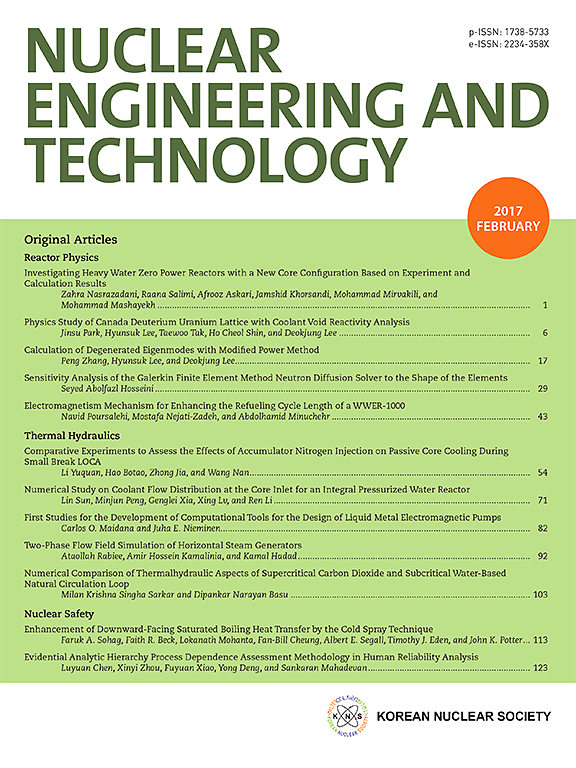Assessing radiological properties of novel tissue equivalent materials for heterogeneous pediatric head phantom: Experimental insights and Monte Carlo simulations
IF 2.6
3区 工程技术
Q1 NUCLEAR SCIENCE & TECHNOLOGY
引用次数: 0
Abstract
This study addresses the need for realistic substitute materials in pediatric head CT to enhance imaging safety. Epoxy resin-based composites were developed to mimic cranial bone, brain tissue, cerebrospinal fluid and eye lens. Radiological properties were validated using Monte Carlo simulations and XMuDat software, with CT numbers measured on a 64-detector CT scanner at 80, 100, and 120 kVp. A comparison was applied against standard tissues from the International Commission on Radiation Units and Measurements (ICRU). For cranial bone, a composite of 70 % epoxy resin and 30 % calcium carbonate achieved a density of 1.65 g/cm³ and Zeff = 11.02, with deviations in mass attenuation coefficients from ICRU standard ranging from 17.4 % at 40 keV to 1.2 % at 150 keV. Brain matter (95 % resin, 5 % acetone) achieved Zeff = 6.19, with deviations from the ICRU standard ranging from 13.7 % to 5.5 %. CSF (80 % resin, 15 % silica, 5 % acetone) closely matched water, with deviations from the water standard ranging from 3.4 % to 1.1 %. Eye lens (95 % resin, 5 % sodium bicarbonate) achieved Zeff = 6.47, with deviations from ICRU standard ranging from 7.5 % to 4.2 %. These results demonstrate the potential of epoxy resin-based substitutes to approximate ICRU standard tissues supporting safer pediatric radiology protocols customized to this sensitive population.
求助全文
约1分钟内获得全文
求助全文
来源期刊

Nuclear Engineering and Technology
工程技术-核科学技术
CiteScore
4.80
自引率
7.40%
发文量
431
审稿时长
3.5 months
期刊介绍:
Nuclear Engineering and Technology (NET), an international journal of the Korean Nuclear Society (KNS), publishes peer-reviewed papers on original research, ideas and developments in all areas of the field of nuclear science and technology. NET bimonthly publishes original articles, reviews, and technical notes. The journal is listed in the Science Citation Index Expanded (SCIE) of Thomson Reuters.
NET covers all fields for peaceful utilization of nuclear energy and radiation as follows:
1) Reactor Physics
2) Thermal Hydraulics
3) Nuclear Safety
4) Nuclear I&C
5) Nuclear Physics, Fusion, and Laser Technology
6) Nuclear Fuel Cycle and Radioactive Waste Management
7) Nuclear Fuel and Reactor Materials
8) Radiation Application
9) Radiation Protection
10) Nuclear Structural Analysis and Plant Management & Maintenance
11) Nuclear Policy, Economics, and Human Resource Development
 求助内容:
求助内容: 应助结果提醒方式:
应助结果提醒方式:


